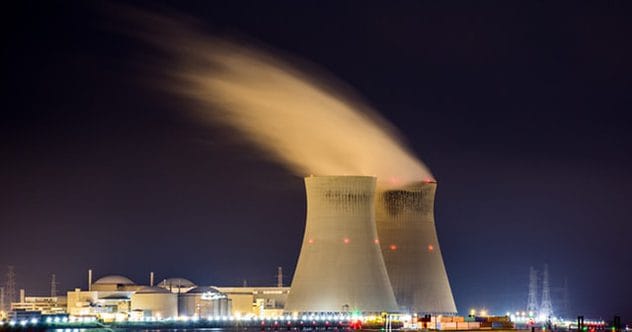America’s story is woven with threads of bold ambition and incredible engineering. While today’s roads and bridges are often in the news, it’s worth looking back. The nation’s history is packed with groundbreaking infrastructure projects. These aren’t just constructions; they’re achievements that literally shaped the country. Let’s explore ten such monumental projects, presented in the order they were completed, that helped build America into what it is today.
10. The Erie Canal (1825)
The Erie Canal wasn’t just a waterway; it was a game-changer for early America. Imagine a time when moving goods across land was slow and incredibly expensive. Most travel relied on old methods like oxcarts, especially where rivers didn’t flow. This made it hard for cities on the coast to get resources from the country’s interior. It also made people think twice about moving west, away from big markets.
New York’s Governor DeWitt Clinton saw a solution: a 363-mile canal. This man-made river would connect the Great Lakes at Buffalo to the Hudson River at Albany. Building it was a massive task. For eight years, workers dug through fields, forests, and even swamps. They used over 80 lift locks to manage changing land levels. The $7 million project was a huge investment for its time.
When the Erie Canal opened in 1825, the impact was immediate and astounding. Shipping costs along this new route dropped by a massive 90 percent. Travel time was cut by more than half. Goods could now float from Buffalo to Albany and then down to New York City. This efficiency turned New York City into the nation’s top commercial hub. Its population exploded, quadrupling by the year 1850.
Beyond the city, the canal opened up the western part of New York State and areas around the Great Lakes, like Ohio and Michigan. Farmers, loggers, and manufacturers could now easily send their products to the busy East Coast markets. The Erie Canal truly helped New York earn its nickname, ‘The Empire State’, by linking the vast American interior to the Atlantic trade.
9. Transcontinental Railroad (1869)
Just a few decades after America’s first steam locomotive chugged to life in 1830, the nation already had 9,000 miles of track, mostly east of the Missouri River. As rail travel grew, the need for canals started to fade. The next big dream was to connect the entire continent by rail. This dream became urgent after gold was discovered in California in 1848.
The Gold Rush pulled waves of people westward, and California quickly became a state in 1850. At that time, states like Texas, Wisconsin, and Iowa were considered the western frontier. Many called for a railroad to link the new Pacific state with the established eastern states. This would make travel to the West Coast faster and safer, and also help settle the vast lands in between.
President Abraham Lincoln took up this challenge, even during the Civil War, America’s greatest crisis. In 1862, he signed the Pacific Railway Act. This act authorized two companies, the Central Pacific and the Union Pacific Railroads, to build tracks connecting Sacramento, California, to Omaha, Nebraska, which was then the westernmost point of the existing rail network.
The two companies raced towards each other, laying track through harsh terrain. They faced attacks from Native American tribes who saw the ‘iron horses’ as a threat to their way of life. The workforce included Civil War veterans, Irish immigrants, and about 14,000 Chinese laborers. It took seven years to complete the 1,912-mile route, and sadly, around 1,200 workers died during construction. Once finished, the coast-to-coast journey that once took months was suddenly possible in under a week. This dramatically sped up America’s westward expansion and unified the nation.
8. The Prison System (1891)
Infrastructure isn’t always about roads and bridges; it can also refer to large-scale societal systems. The development of America’s prison system is one such example, with a significant infrastructural milestone in 1891. That year, the Three Prisons Act was passed, officially creating the Federal Prison System. This led to the opening of the first three federal prisons in Leavenworth, Kansas; McNeil Island, Washington; and Atlanta, Georgia.
Today, the U.S. criminal justice system is vast. It includes over 1,800 state prisons, around 110 federal prisons, numerous juvenile facilities, thousands of local jails, and specialized detention centers. The United States has a very high incarceration rate per capita compared to other nations worldwide. In fact, its total prison population is larger than any other country, even those with much larger overall populations like China and India.
The reasons for this extensive system and high Mopulation are complex. They involve historical factors, legal policies, and societal choices. Some point to issues like collaborations between public and private entities that may incentivize longer sentences, a cash bail system that can keep poorer individuals incarcerated before trial, and the long-term impacts of policies like the War on Drugs, which often included mandatory minimum sentences for various offenses.
7. New York City Subway (1904)
While Boston can claim America’s first subway, dating back to 1897, New York City’s subway system is by far the largest and most vital to its city’s operations. Opened in October 1904, its first line ran for nine miles and served 28 stations. It started at City Hall in Lower Manhattan, traveled north to Grand Central Station, then west to Times Square, and finally north again into Harlem.
The system quickly grew. Service expanded to the city’s other boroughs, which had only recently joined to form Greater New York City in 1898. The subway reached the Bronx in 1905, Brooklyn in 1908, and Queens in 1915. Just as the Erie Canal helped make New York City a national leader, the subway was crucial for keeping it that way. As new lines reached every corner of the city, a unique commuter culture developed, making it possible for millions to live and work within its bounds.
Today, the NYC Subway is a massive network with 25 lines serving an incredible 472 stations – more than any other subway system in the world. Its sprawling map can be famously confusing for visitors. The system boasts over 650 miles of track and carries more than 5.5 million passengers on nearly 6,500 subway cars every weekday. Unlike subways in many other major cities, New York’s runs 24 hours a day, seven days a week. It is arguably the single most important transportation system in the country, the lifeblood of America’s economic engine.
6. The Los Angeles Aqueduct (1913)
At the beginning of the 20th century, Southern California was a place with big dreams but very little water. For Los Angeles to grow and compete with its northern rival, San Francisco, it desperately needed a reliable supply of this essential resource. The arid climate simply couldn’t support a large population or extensive agriculture on its own.
City leaders came up with an ambitious solution: the Los Angeles Aqueduct. Costing $23 million, this massive engineering project was completed in 1913 after five years of construction. It diverted water from the Owens River in the Eastern Sierra Nevada mountains, channeling it 233 miles southwest to Los Angeles. At its peak, about 3,900 workers toiled to build long stretches of canals and several storage reservoirs. Remarkably, the entire system was designed to use gravity to move the water, and the flowing water also generated electricity, which helped cover operating costs.
The aqueduct had a profound impact on Los Angeles. After its completion, the city’s physical area grew more than seven times larger, from 61 square miles to 440 square miles. This was partly because communities wanting to use the aqueduct’s water were required by the city’s charter to become part of Los Angeles itself. The system was expanded in the 1960s to carry even more water. Today, the aqueduct still provides nearly 30% of the water for the city’s four million residents. However, with increasing droughts, likely linked to climate change, its operation has led to legal disputes over water rights and environmental concerns.
5. The Hoover Dam (1936)
Similar to the Los Angeles Aqueduct, the Hoover Dam was built to help tame the American West and enable large-scale settlement. While it’s famous for generating electricity, this colossal dam also played a critical role in controlling the frequent and devastating floods along the 1,450-mile Colorado River. By managing the river’s flow, it also allowed water to be diverted to dry regions that otherwise couldn’t have supported significant population growth.
The sheer size of the Hoover Dam is breathtaking. It stands over seven stories high and is nearly a quarter-mile long. The amount of concrete used in its construction was enough to build a four-foot-wide sidewalk around the entire Earth. At its top, the dam is 45 feet thick, about the width of a four-lane highway. At its base, it’s an incredible 660 feet thick – almost twice the length of a soccer field.
Amazingly, this gigantic structure was completed in just five years. However, this rapid pace came at a human cost, with as many as 138 workers dying during its construction. The Hoover Dam’s impact was immediate and far-reaching. Its importance was highlighted by a foiled Nazi plot to destroy it before America entered World War II. The goal was to cut off vital electricity to California’s growing airplane manufacturing industry, which would have seriously hampered America’s ability to prepare for and wage war.
4. Interstate Highway System (1956)
Soon after the first Ford Model T cars rolled off assembly lines in 1908, it was clear that automobiles would transform American life. Early efforts to improve roads included the Federal Aid Road Act of 1916, which funded local road connections, and a 1921 law that expanded this to major routes. By 1926, the first numbered highways appeared, setting up a system for navigation.
But the most significant road-building project began when President Dwight Eisenhower signed the Federal Aid Highway Act of 1956, often called the Interstate Highway Act. The vision was to create a standardized, interconnected network of high-speed highways across the entire nation. These new roads were designed as controlled-access expressways. This meant no stoplights or intersections at the same level; instead, they used overpasses and underpasses for smoother, faster travel.
The initiative wasn’t without its critics and challenges. In many cities, building these new freeways meant demolishing established neighborhoods, which caused considerable hardship and controversy. For example, in New York, powerful urban planner Robert Moses proposed a 10-lane highway through Lower Manhattan, a plan that was ultimately stopped by community opposition.
An unforeseen consequence of the interstate system was the growth of suburbs. As easy-to-use highways circled major cities, many middle-class families, predominantly white, moved to commuter towns outside city limits. This trend, known as ‘white flight’, sometimes led to economic downturns in urban centers. Despite these issues, the system brought enormous benefits. It made travel more efficient, reduced traffic congestion on older roads, and lowered commercial shipping costs and times, modernizing America’s economy and culture in profound ways.
3. National Parks Roadways & Recreation Areas (1956)
As the new interstate highways spread across the country, Americans embraced road travel like never before. This newfound ability to explore coincided with more leisure time for many people. The economic boom after World War II empowered labor unions and professionals to negotiate for better wages and more vacation time.
With affordable commercial air travel still some years away, families packed their cars and set off to see the country. A favorite destination was America’s national parks, considered some of the nation’s greatest treasures. By 1955, the number of annual visitors to national parks reached 56 million, a huge jump from 21 million in 1941.
Unfortunately, the parks weren’t equipped to handle this surge in popularity. Overcrowding became common, and there weren’t enough recreational areas or well-maintained roads within the parks. Accessible areas suffered from litter and pollution, while many other beautiful spots remained hard to reach.
In response, National Park Service director Colin Wirth proposed a ten-year improvement plan in 1956 called ‘Mission 66’ (named for its target completion year of 1966). This plan invested hundreds of millions of dollars into widespread infrastructure upgrades. It focused on building more nature-friendly access roads, increasing staffing, improving maintenance, and creating better visitor centers. This effort was a success, helping to protect America’s precious wilderness while allowing people to visit and enjoy these natural wonders more sustainably and comfortably.
2. Nuclear Power Plants (1958)
Interestingly, the United States wasn’t the first country to build a nuclear power plant; the Soviet Union (1954) and the United Kingdom (1957) were slightly ahead. However, the U.S. quickly became the world’s leading generator of nuclear energy. At its highest point in 2012, the country had 104 operational reactors. Today, America’s 96 working reactors are still the most in the world, producing nearly 100,000 megawatts of electricity, which accounts for about 20% of the nation’s total electricity supply.
Nuclear power has always come with safety concerns. These include the creation of radioactive waste, which needs careful long-term storage, and the potential for accidents like those at Chernobyl or Three Mile Island. Despite these valid worries, the development and operation of nuclear power plants offered an important lesson: energy could be produced without emitting carbon into the atmosphere.
This lesson is especially valuable today, as countries worldwide urgently try to increase their use of green energy to combat climate change. The U.S. still has a significant journey ahead to become a leader in sustainable energy. Currently, only about 20% of America’s energy comes from renewable sources like hydro, wind, and solar power. In contrast, countries like Iceland and Norway generate all their electricity from renewables, and many other nations get over half their electricity from such sources. Recent U.S. government plans aim to greatly boost renewable energy production, including a goal to generate 40% of the country’s electricity from solar power by 2035.
1. Vaccine Manufacturing & Distribution (2020)

The rapid development of effective vaccines against the novel coronavirus in 2020 stands as one of medical science’s most remarkable recent achievements. However, creating a vaccine is only half the battle; manufacturing and distributing it to millions of people is an enormous infrastructure challenge in itself. Operation Warp Speed, initiated by the U.S. government, played a key role in this effort.
A primary goal of Operation Warp Speed was to secure enough vaccine doses for the American population. The program also provided significant funding for two other critical areas: boosting U.S.-based vaccine manufacturing capabilities and setting up a nationwide distribution system. By March 2021, the United States had produced over 100 million vaccine doses, a massive industrial feat.
The distribution and administration of these vaccines, particularly the mRNA vaccines from Pfizer and Moderna, presented unique logistical hurdles. For instance, Pfizer’s vaccine initially required storage at extremely cold temperatures of -70°C (colder than Antarctica) and had to be used within five days once thawed. America’s advanced medical infrastructure, combined with efficient human resource management, allowed it to vaccinate its population at a faster rate than many other developed nations in the early months following FDA emergency approval. This showcased how robust public health infrastructure can be critical in a crisis.
These ten projects are more than just concrete, steel, and tracks. They represent America’s drive to connect, grow, and overcome challenges. Each one, in its own way, laid the foundation for the nation we see today, reminding us that building a better future often starts with bold infrastructure.
Which of these monumental projects do you find most impressive? Or is there another project you think should be on this list? Share your thoughts in the comments below!










